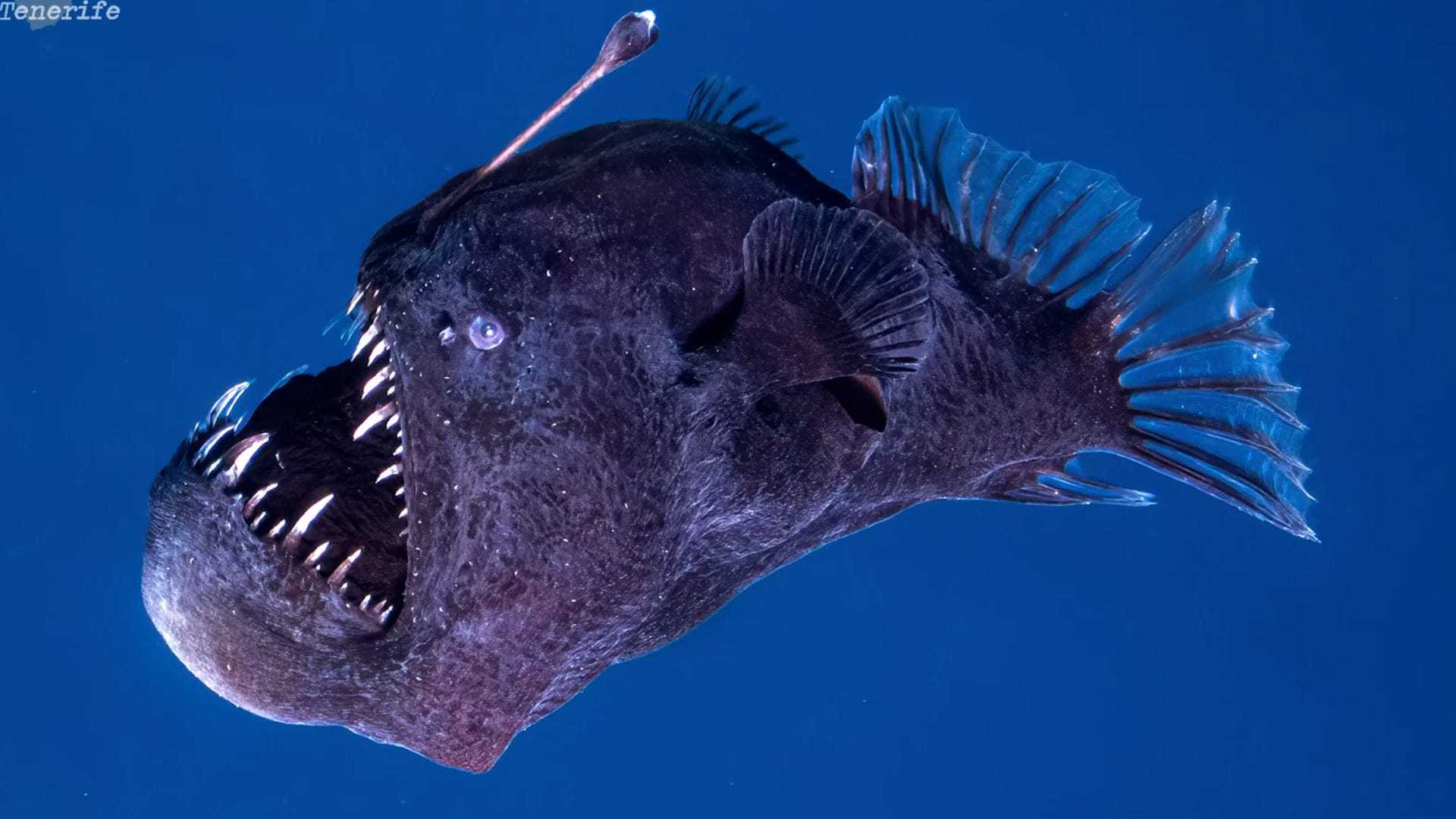News
Unprecedented Daylight Sighting of Rare Humpback Anglerfish Near Tenerife

TENERIFE, Spain — Researchers off the coast of Tenerife made an astonishing discovery last week when they spotted a rare humpback anglerfish, known scientifically as Melanocetus johnsonii, swimming near the ocean’s surface, potentially marking the first-ever sighting of this deep-sea creature in daylight.
The unexpected encounter occurred during a shark research expedition organized by the NGO Condrik. Typically residing at depths ranging from 200 to 2,000 meters, this adult anglerfish was seen just two kilometers off the coast, where underwater photographer David Jara Boguñá first documented the unusual spectacle.
Marine biologist Laia Valor, who participated in the expedition, described the initial moment of discovery. “We were returning to port when I saw something black in the water that didn’t look like plastic or debris. It seemed unusual,” she told the EFE news agency. The crew spent several hours observing the fish, which appeared to be in poor condition and only survived briefly after being spotted.
Prior to this event, all known sightings of the humpback anglerfish had been recorded through submarine imaging or involved deceased specimens. Valor noted, “While we can’t say this never happens, if it were more common, we would see it more frequently. This could very well be the first time it has ever been filmed in these conditions.”
The team has not yet determined why the anglerfish surfaced. Some scientists hypothesize that this behavior may occur during El Niño weather patterns, which disrupt cold water upwelling along North America’s coast, potentially drawing deep-sea species toward shallower waters.
Following its death, the body of the anglerfish was transported to the Museum of Nature and Archaeology (MUNA) in Santa Cruz de Tenerife for further study. This curious incident provides valuable insights into the hitherto enigmatic life of the humpback anglerfish, a species recognized for its bioluminescent lure used to trap prey in the dark.
The humpback anglerfish is characterized by its large mouth filled with sharp teeth and a notorious reputation as one of the deep sea’s most peculiar and intimidating residents. Historically, the first documented discovery of the species occurred in 1863, when English naturalist James Yates Johnson found a specimen near Madeira, with zoologist Albert Günther later classifying it based on its unique features.
Research of this nature is crucial, as deep-sea ecosystems remain largely unexplored and poorly understood. Sightings such as this not only shed light on the existence of elusive species but also raise questions about environmental changes and their impact on marine life.
As researchers continue to analyze the anglerfish’s specimen, this extraordinary event serves as a reminder of the ocean’s diverse and mysterious inhabitants.












